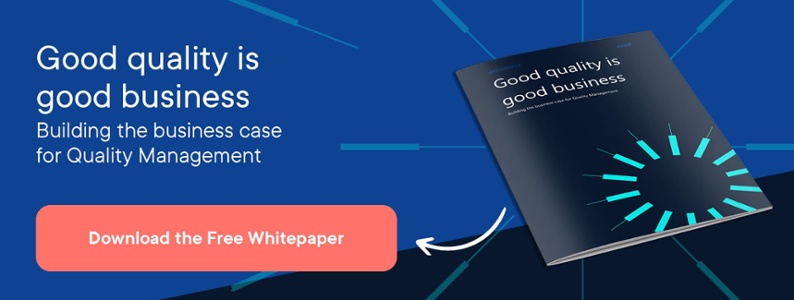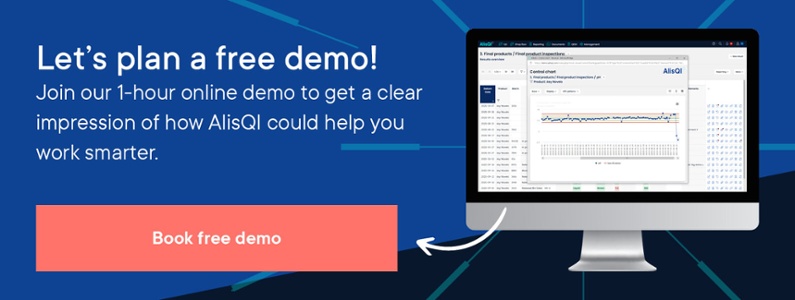Solvers help you monitor quality, apply SPC, manage equipment, and ensure traceability.

How to build the case for Quality Management – a step-by-step guide
So, you’ve decided to invest in a smart eQMS and enjoy the benefits of automation. While you know that this will give quality a boost and help people work more efficiently, there is still one important step that you need to take. Management needs to understand the financial value and the market advantages that this investment could provide.
Yet, quantifying your business function is not an easy task. And, looking back at your quality-related investments, you probably imagine that calculating their impact is both complex and very time-consuming. What if that wasn’t the case? This article introduces a step-by-step guide to help you track the cost of quality. So, if you’d like to learn how to build a solid business case for Quality Management that will undoubtedly give you financial validation, read on.
Unclear contribution about to become clear
It’s difficult to quantify the quality business function since this has become intertwined with most processes of the modern factory. Because of this, executives with no experience in Quality Management often fail to recognize its value. And the unclear contribution to corporate success is all too often a common perception in the rest of the organization. Even worse, the quality business function is still suffering from its historical reputation – of being a cost center, with no other value than detecting off-spec production.
The most obvious way to justify how quality contributes to the bottom line and gain executive approval is to present a business case that shows a positive return on investment.
Communicating value should start with this
Built on the foundation of the PAF model and using trusted industry benchmarks, we built a Return on Investment (ROI) calculator. This smart tool calculates the financial impact of any quality investment for you. All you need to do is to insert your annual revenue, and the anticipated reduction and improvements per cost center, and the Total Cost of Quality calculator will provide a clear ROI figure in milliseconds!
When using the calculator, you may get pushback from your coworkers about the assumptions used in the model. We argue though, that using assumptions is far superior to having no model at all or ignoring the cost of good quality. Or even worse: spending months to collect data, and frequently not even knowing if it is fully accurate. The model allows you to tweak the weight of topics and estimated reductions, so you can always use that to enter numbers that make sense for your organization.
To build a solid business case, you’ll need an in-depth analysis. This step-by-step guide will set you on the right track:
- Use the PAF (Prevention, Appraisal, Failure) Model to make a clear distinction between good quality and poor quality and their related costs
- Find your Total Cost of Quality optimum by assessing the balance between the cost of good quality and the cost of poor quality
- Bundle your quality management activities into the PAF model categories and use assumptions to quantify these
- Work with a standard unit price for every risk assessment, every customer complaint, and every audit etcetera
- Use industry benchmarks to help assign monetary value when building your business case
The financial model and the five steps to build a solid business case are explained in further detail in our new whitepaper “Good quality is good business”.
An ROI calculator to ease your task
AlisQI to monitor quality and confidently track costs
Manufacturing companies that are working with a state-of-the-art integrated quality management solution routinely report and experience total quality costs as low as 1.5% of revenue. For the AlisQI Quality Management Software we expect an overall cost reduction of at least 10%. For a manufacturer with $100m in annual revenue this leads to over $420k savings per annum.
Using AlisQI as your eQMS, you can track the Total Cost of Quality even further. Our Cost of Quality dashboard provides immediate insights into your quality. The costs are segmented into the four categories of the PAF model and presented over time.

With this dashboard manufacturers will benefit from a standardized approach and improved understanding of the total cost of quality. Provided you have a culture of quality and accurately track the relevant data, you will get real-time insights into your Cost of Quality.
We can help you build a solid business case and calculate the savings you’ll leverage with AlisQI. It all starts with a short conversation. Schedule your demo here!



